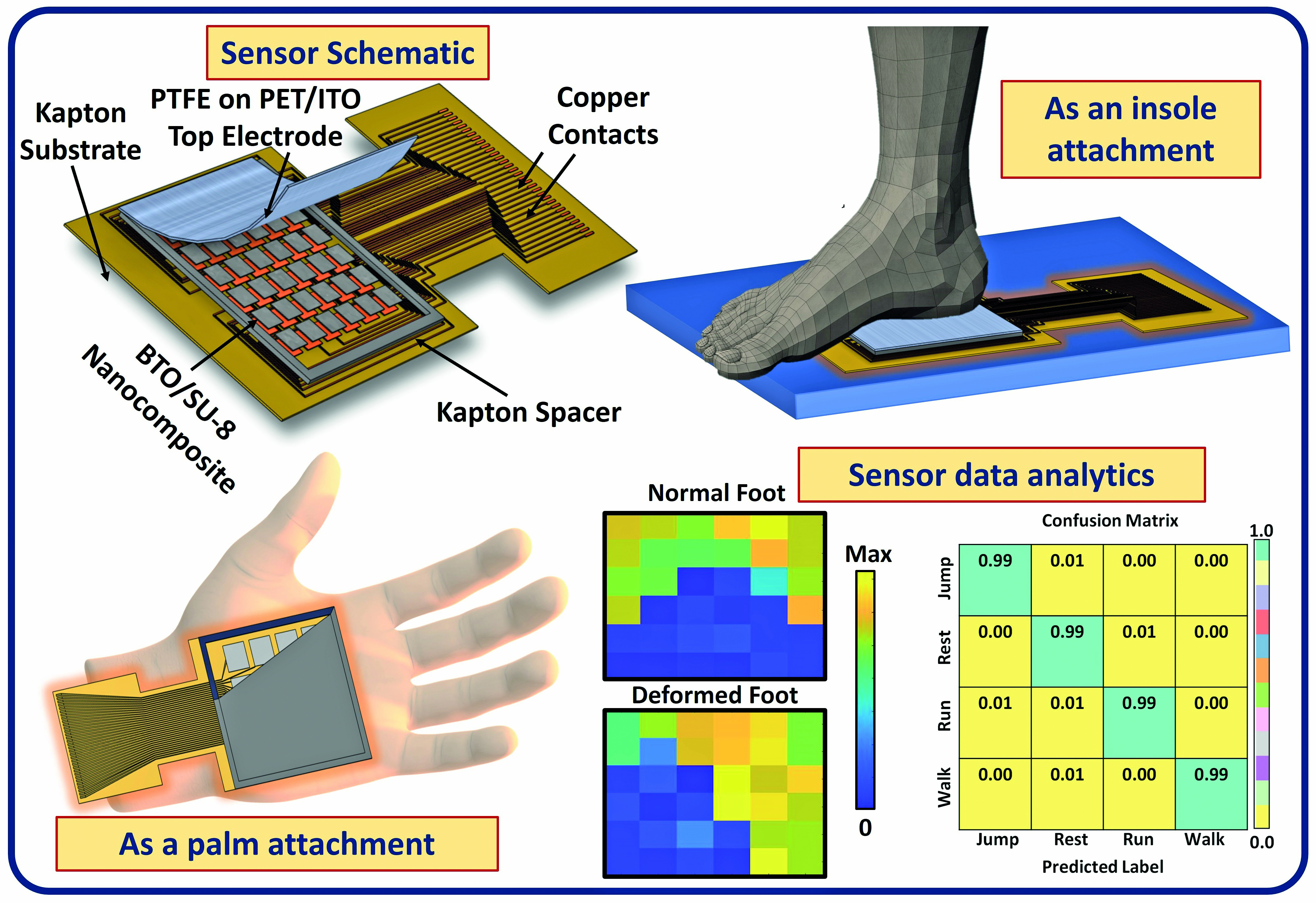IIT Delhi develops scalable wearable pressure sensor
Can help doctors and specialists analyse gait patterns and postural deformities

Gait and postural deformities are incapacitating and common in the present world. Studies indicate that the most prominent deformities include splay foot, flat foot, unstable hind foot with protruding heels, high arches, and irregular gait. They are directly associated with poor balance, abnormal posture, swollen knees, and joint weaknesses that cause difficulty in walking. Researchers at IIT Delhi have developed one such scalable wearable pressure sensor based on a nanocomposite material, that has unique combination of light-sensitive polymer and piezoelectric nanoparticles, which offers the advantage of easy array design for pixelated sensing over large area, simple process flow, and low-cost implementation for human movement monitoring and injury rehabilitation.
A research study titled ‘Machine Learning Assisted Hybrid Transduction Nanocomposite Based Flexible Pressure Sensor Matrix for Human Gait Analysis’ by research scholars Nadeem Tariq Beigh and Faizan Tariq Beigh, and Prof Dhiman Mallick, all from the Department of Electrical Engineering at IIT Delhi, has published in Nano Energy, which is a leading journal in the field of nanotechnology with impact factor of 17.6. This work is financially supported by I-Hub Foundation for Cobotics, Technology Innovation Hub of IIT Delhi.
The researchers in their study found the reported sensor as fully flexible that can be implemented as a sensor array considering a robust design that comfortably fits inside the insole of varying sizes. It can also be easily attached at the palm or any body part where localised pressure sensing can be useful. The use of dual transduction nanocomposite material in the proposed sensor allows concurrent sensing of mechanical strain as well as contact force/pressure that helps in easy integration with current Machine Learning algorithms by providing higher feature elements.
“During the number of tests that we conducted in our laboratory, we found that the proposed sensor can potentially help detect foot problems in adults and children by analysing the pressure variation on the back end of the foot and converting it into electrical output. Since abnormal hind foot pressure distribution can lead to problems in knee joints, hips, and even spine-related injuries, understanding and correcting it is an important application”, said Dr. Dhiman Mallick, lead researcher and Assistant Professor at Electrical Engineering Department, IIT Delhi.
Furthermore, owing to the versatile nature of the developed sensor system, the sensor can be employed in injury rehabilitation. For instance, the sensor has been utilized to assess hand grip strength. This use is crucial when dealing with limb injuries and plays a key role in comprehending recovery. In situations with injuries to the limbs or palms, the strength of the grip is directly related to the healing progress.



